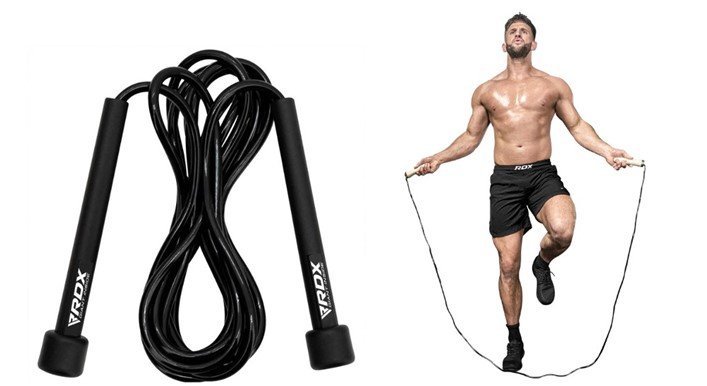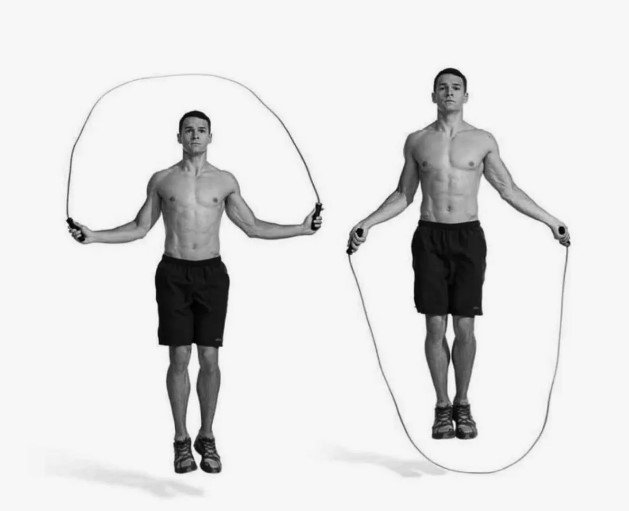Skipping Ropes: You’re Ultimate Guide to a Fun and Effective Workout

Skipping ropes are not just a child's plaything. They've evolved into a powerful workout tool used by athletes and fitness enthusiasts worldwide. Let's dive into everything you need to know about skipping ropes, from their history to advanced techniques and benefits.
History of Skipping Ropes:
Skipping ropes have a rich history, dating back to ancient civilizations. Early records suggest that Egyptians and Chinese used ropes for play and exercise. Over centuries, skipping evolved from a simple pastime to an essential exercise component, embraced by boxers, athletes, and fitness buffs globally.
Benefits of Skipping Ropes:
Physical Health Benefits:
Skipping ropes offer an incredible cardiovascular workout. Just 10 minutes of skipping can burn as many calories as a 30-minute jog. It's excellent for improving heart health, increasing stamina, and enhancing coordination. Regular skipping also tones muscles, especially in the legs, arms, and core.
Mental Health Benefits:
Beyond physical health, skipping ropes boost mental well-being. The rhythmic nature of skipping can be meditative, reducing stress and anxiety. Plus, achieving new skipping techniques or setting personal records provides a mental boost and sense of accomplishment.
Convenience and Affordability:
One of the greatest perks of skipping is its convenience. A skipping rope is inexpensive, portable, and can be used anywhere, making it perfect for those with a busy lifestyle or limited space for exercise equipment.
Types of Skipping Ropes:
Basic Jump Ropes:
These are your standard ropes, ideal for beginners. They're typically made of PVC or rubber and are lightweight and easy to handle.
Speed Ropes:
Speed ropes are designed for fast skipping. They're lighter and thinner than basic ropes, making them perfect for high-intensity workouts and improving speed and agility.
Weighted Ropes:
Weighted ropes have added weight in the handles or the rope itself. They provide a more intense workout by engaging more muscle groups, helping build strength and endurance.
Beaded Ropes:
These ropes have beads along the length, providing extra weight and making them more durable. They're great for rhythmic and freestyle skipping.
How to Choose the Right Skipping Rope:
Considering Your Fitness Goals:
Determine what you want to achieve with your skipping. For general fitness, a basic or speed rope will suffice. For strength training, opt for a weighted rope.
Material and Durability:
Choose a rope made from durable materials like PVC, leather, or beaded nylon. This ensures longevity, especially if you'll be skipping on rough surfaces.
Length and Adjustability:
Ensure the rope length suits your height. When you stand on the middle of the rope, the handles should reach your armpits. Many ropes come with adjustable lengths for customization.
Basic Skipping Techniques:
Single Bounce:
The single bounce is the most basic technique, where you jump once for each turn of the rope. It's great for beginners to build rhythm and timing.
Double Under:
In a double under, the Skipping rope passes under your feet twice with each jump. It’s a more advanced move, perfect for high-intensity workouts.

Criss-Cross:
For the criss-cross, cross your arms in front of your body with each jump. This adds variety and works different muscle groups.
Advanced Skipping Techniques:
Side Swing:
The side swing involves swinging the rope to one side and jumping over it, then swinging it to the other side. It enhances coordination and agility.
High Knees:
Skipping with high knees involves bringing your knees up towards your chest with each jump. This intensifies the workout and targets the core and lower body.
Backward Skipping:
Skipping backward challenges your coordination and works different muscle groups. It’s a fun way to mix up your routine.
Skipping Rope Workouts:
Beginner Workout Routines:
Start with a simple routine: skip for 30 seconds, rest for 30 seconds, and repeat for 10 minutes. Gradually increase the skipping duration as you build endurance.
Intermediate Workout Routines:
Incorporate different techniques like double under and criss-crosses. Try skipping for 1 minute, resting for 30 seconds, and repeating for 20 minutes.
Advanced Workout Routines:
Combine high knees, side swings, and backward skipping for a full-body workout. Aim for 2 minutes of intense skipping followed by a 1-minute rest, repeating for 30 minutes.
Incorporating Skipping into Your Fitness Routine:
Warm-Up and Cool-Down Exercises:
Use skipping as a warm-up to get your blood flowing and muscles loosened. It's also a great cool-down activity to gradually bring your heart rate down.
Combining Skipping with Other Exercises:
Pair skipping with other exercises like push-ups, squats, and lunges for a comprehensive workout. This combination enhances overall fitness and keeps your routine interesting.
Common Mistakes to Avoid:
Incorrect Rope Length:
A rope that's too long or too short can hinder your progress and increase the risk of tripping. Make sure your rope is the right length for your height.
Poor Posture:
Keep your back straight, elbows close to your body, and jump on the balls of your feet. Poor posture can lead to injuries and inefficiencies in your workout.
Overtraining:
It's easy to overdo it, especially when you're enthusiastic. Start slowly, gradually increasing the intensity and duration to avoid injuries.
Tips for improving you’re Skipping Skills:
Consistent Practice:
Like any skill, practice is key. Set aside time each day for skipping to see continuous improvement.
Focus on Form:
Good form is crucial for effective skipping. Pay attention to your posture, hand positioning, and jump height.
Setting Goals:
Set achievable goals to stay motivated. Whether it's mastering a new technique or increasing your skipping duration, having goals keeps you focused.
Skipping Rope Challenges and Competitions:
Local and International Competitions:
Skipping competitions test speed, endurance, and technique. Participating in these can be a fun way to challenge you and meet fellow enthusiasts.
Popular Skipping Challenges:
Online challenges like the "30-Day Skipping Challenge" can provide structure and motivation. These often involve increasing skipping time or mastering new techniques over a month.
Skipping Ropes for Kids:
Benefits for Children:
Skipping ropes are excellent for kids, promoting physical fitness, coordination, and social interaction. It's a fun way to keep them active and engaged.
Fun Skipping Games:
Games like "Double Dutch" and "Skipping Relay" can make skipping more enjoyable for children, fostering teamwork and healthy competition.
Skipping Rope Maintenance:
How to Care for Your Rope:
Regularly check your rope for wear and tear, especially if you skip on rough surfaces. Clean it occasionally to remove dirt and sweat.
Storing Your Rope Properly:
Store your rope in a cool, dry place to prevent damage. Avoid leaving it in direct sunlight or damp areas.
Conclusion:
Skipping ropes offer a versatile, effective, and fun workout option. Whether you're a beginner or an advanced fitness enthusiast, there's a skipping technique and routine for you. So, grab a rope and start skipping your way to better health!
What's Your Reaction?










![Wireless Connectivity Software Market Size, Share | Statistics [2032]](https://handyclassified.com/uploads/images/202404/image_100x75_661f3be896033.jpg)



